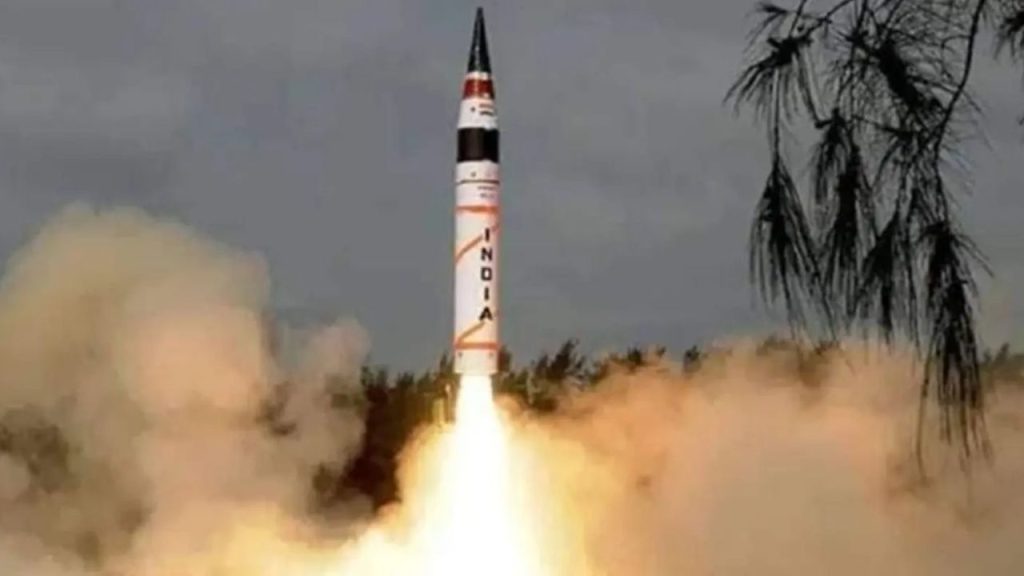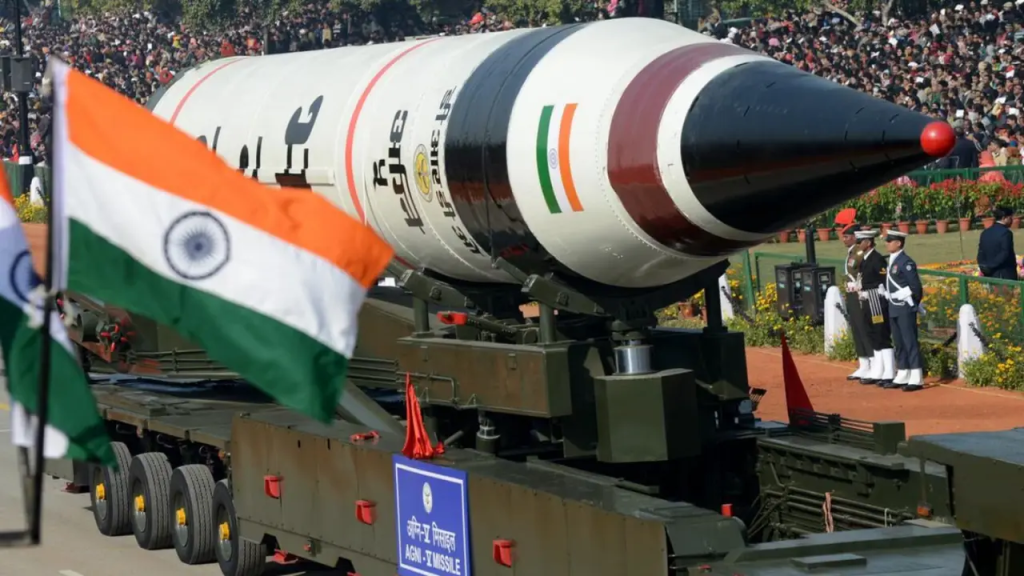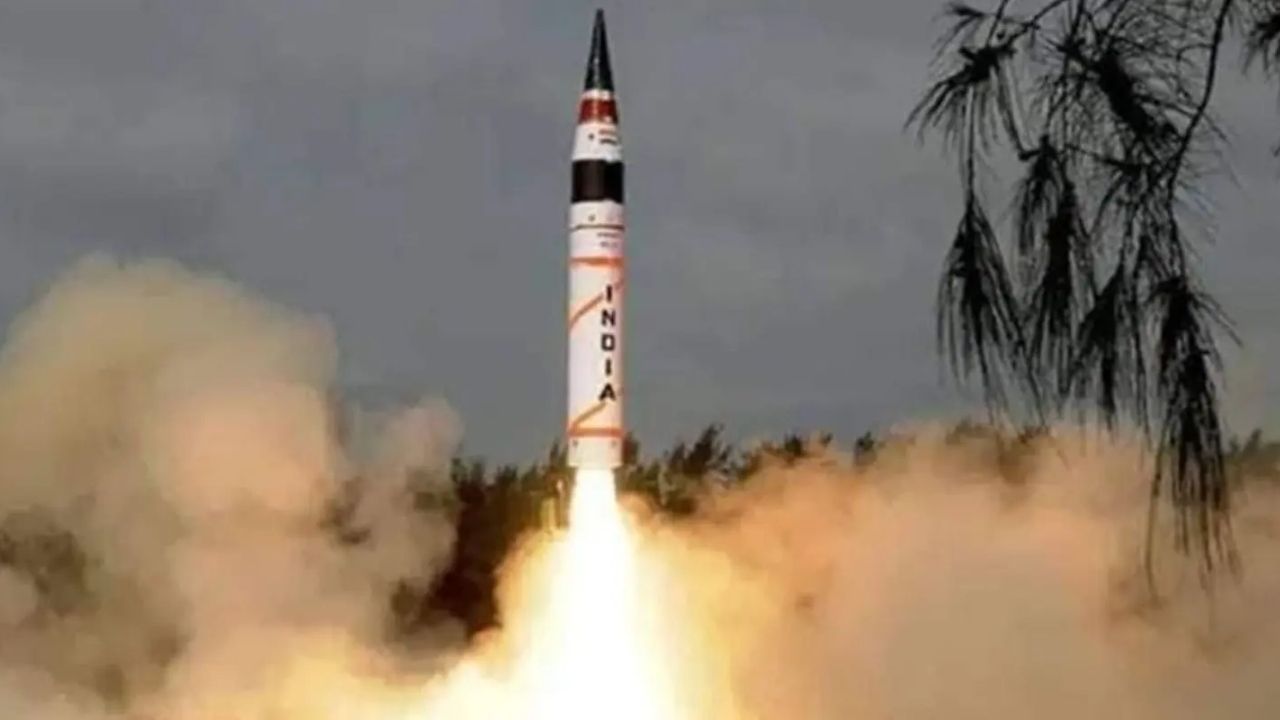India’s successful test launch of the Agni 5 ballistic missile from the Integrated Test Range at Chandipur, Odisha on August 20, 2025, marks a significant milestone in the nation’s defense journey. This event highlights not only India’s advanced missile capabilities but also its strategic importance in the global security arena. The Agni 5 missile, part of India’s strategic deterrence program, is a powerful weapon with a long range, cutting-edge technology, and a strong focus on national security. In this article, we’ll dive into what makes the Agni 5 missile so impressive, why its successful test is crucial, and what it means for India’s growing defense capabilities.

Agni 5 Test Launch
| Key Feature | Detail |
|---|---|
| Test Location | Integrated Test Range, Chandipur, Odisha PIB India |
| Missile Range | Over 5,000 kilometers |
| Payload Capacity | Capable of carrying a nuclear warhead up to 1.5 tonnes |
| Technology Used | MIRV technology, ring laser gyroscope, satellite navigation (NavIC, GPS) Times of India |
| Launch Platform | Canisterized platform for quick deployment |
| Strategic Impact | Strengthens India’s defense, focuses on regional security, especially China |
| Successful Launch Date | August 20, 2025 |
India’s successful test of the Agni 5 missile is a monumental step in bolstering the nation’s defense capabilities. With its advanced features, including long-range precision, MIRV technology, and canisterized platform, the Agni 5 ensures that India can defend its interests effectively, particularly in a region of growing security complexities. This test further reinforces India’s position as a key player in global defense and highlights its commitment to a strong deterrent strategy.
Understanding the Agni 5 Missile: A Game-Changer in Defense
The Agni 5 missile is part of India’s Agni series of ballistic missiles, and this successful test has made headlines due to its impressive features. To help you understand why it matters, let’s break down the missile’s key characteristics and why they’re a game-changer for India’s defense posture.

1. Long-Range Capability: Over 5,000 Kilometers
One of the most striking features of the Agni 5 missile is its long-range capacity. With a reach of over 5,000 kilometers, it can strike targets deep inside enemy territories, including those in China, Pakistan, and other regional areas. For context, this range is significant because it allows India to maintain a credible minimum deterrence strategy, a key principle in nuclear defense.
Example: Imagine you’re in the middle of the U.S. and need to target an area on the other side of the world—this is the kind of range Agni 5 offers, making it a critical tool for India’s defense.
2. Multiple Independently Targetable Re-entry Vehicle (MIRV)
The Agni 5 is equipped with MIRV technology, which allows it to carry and deliver multiple warheads to different targets simultaneously. This technology makes it incredibly difficult for enemies to defend against the missile, as intercepting one warhead doesn’t stop the others.
Example: Think of it as a bus that can drop off passengers at different stops all at once—no matter how many defenses there are, the bus is getting to its destination.
3. Incredible Accuracy
The missile features a ring laser gyroscope-based inertial navigation system (RLG-INS) and micro-inertial navigation system (MINGS), both of which work together to provide exceptional accuracy. These systems are supported by India’s own NavIC satellite navigation, in addition to the global GPS system. This combination ensures that the missile can strike its target with a very high degree of precision, minimizing collateral damage and enhancing the credibility of India’s defense systems.
Example: It’s like playing darts with perfect aim every time—you’re guaranteed to hit your target.
4. Rapid Deployment with Canisterized Launch Platform
The Agni 5 is launched from a canisterized platform, which allows for faster mobility and rapid deployment. This feature means that the missile can be quickly prepared for launch without requiring heavy infrastructure or long setup times, making it more versatile and effective in real-time defense scenarios.
Example: Imagine you have a quick-access tool chest ready at your fingertips—it allows you to respond immediately without wasting any time.
Why is Agni 5 a Big Deal for India?
India’s growing defense capabilities have long been a point of national pride, and the successful test launch of the Agni 5 missile underscores the country’s strategic intent to bolster its security framework. Here’s a breakdown of why this development is so important:
1. Strengthening National Security
The Agni 5 missile strengthens India’s nuclear deterrence capability, particularly against potential threats from China and Pakistan. This missile is a major asset in India’s nuclear triad—the ability to launch nuclear missiles from land, sea, and air—thereby providing comprehensive security coverage.
2. Strategic Deterrence in the Region
The test also signifies India’s commitment to credible minimum deterrence (CMD), which means maintaining enough nuclear weapons to deter adversaries without escalating the situation. The Agni 5 missile’s long range and precision make it a credible deterrent, ensuring that India can defend its borders and maintain peace in a volatile region.
Example: It’s like having a big dog that barks loudly enough to make anyone think twice before approaching your property.
3. Technology and Innovation Leadership
The missile’s advanced technology, including MIRV and satellite navigation systems, positions India as a leader in military technology. As global tensions rise, nations are continuously improving their defense capabilities, and India’s advancements ensure that it is prepared to face evolving threats.
4. Global Security Impact
The successful test of the Agni 5 also has global implications, particularly in terms of security dynamics in Asia. The missile’s range means that India can now directly affect areas in both East Asia and Europe, further extending its geopolitical influence.
DRDO Achieves Milestone with Successful ‘Pralay’ Missile Range Tests in Odisha
IAF Agniveer Vayu Rally in Mayurbhanj from Aug 27: Full Details for Odisha Aspirants
India Conducts Successful Ballistic Missile Tests in Odisha: Prithvi-II and Agni-I
FAQs
What is the Agni 5 missile?
The Agni 5 is an intermediate-range ballistic missile (IRBM) developed by India. It can carry both conventional and nuclear warheads, and its range exceeds 5,000 kilometers, making it capable of reaching most parts of Asia, including northern China.
How does the Agni 5 compare to other missiles?
Compared to other missiles, the Agni 5’s range, accuracy, and MIRV technology set it apart. This allows it to be much more strategically flexible and difficult to counter.
What is the significance of MIRV technology in the Agni 5?
MIRV technology enables the missile to carry and launch multiple warheads, each targeting a different location. This significantly enhances its effectiveness and makes it harder for enemies to defend against.
Why is India developing such powerful missile systems?
India’s development of the Agni 5 missile is part of its broader strategy to ensure national security, maintain a strong deterrence capability, and assert its position in global defense.





